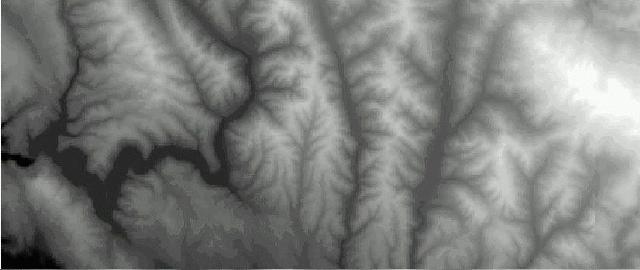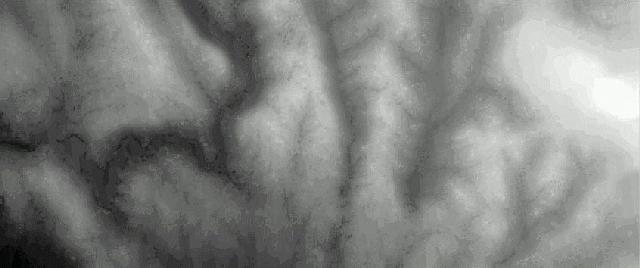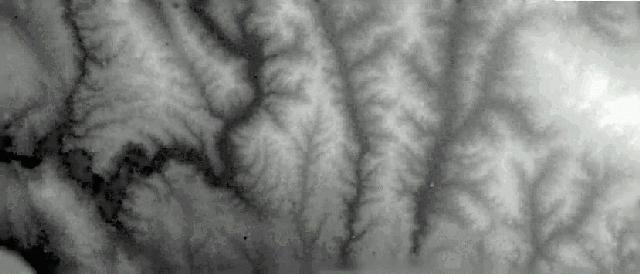TIN Densification in DEM Extraction
V5.40 –– July 1996
The TNTmips Stereoscopic Modeling process (Prepare / Raster /
Stereoscopic Modeling) creates elevation surfaces and orthoimages from input
stereo pairs. Before V5.4, TNTmips used an Area Correlation method for the DEM
Extraction step. Since V5.4, a new DEM Extraction method called TIN
Densification is used. TIN Densification processes the input images and
quickly and reliably identifies thousands of correlation points, which are
used to establish the variable stereo parallax across the images (and thence
elevation values). The surface illustrated above contains 70,000 correlation
points derived from input images of approximately 3200 x 1600 cells.
The TIN Densification method was developed when a TNTmips client in Australia got in touch with MicroImages to relate the problems he was having with the DEM Extraction process for a certain pair of input photos. When the support staff and software engineer at MicroImages examined the input stereo pair, it became obvious that a different software approach would be needed to produce satisfactory results from that kind of input.
In response, the MicroImages software engineer responsible for the DEM extraction module created a new TIN Densification process that works well on the particular type of images from Australia, and is also proving to give better results on many other kinds of images.
Compare the results for yourself. First, for reference, look at the USGS DEM for part of the Hayward map quadrangle in the San Francisco bay area.

Next, look at the results produced from NHAP airphotos (3.7-meter cell size) by the original Area Correlation DEM Extraction method.

Finally, see the improvement produced by the TIN Densification method introduced in TNTmips V5.4.

NOTE: The DEM extracted by the TIN Densification method shows some elevation anomalies along the bottom edge. This effect is typical of all stereo DEM extraction methods and would be remedied by combining the result with adjacent models.